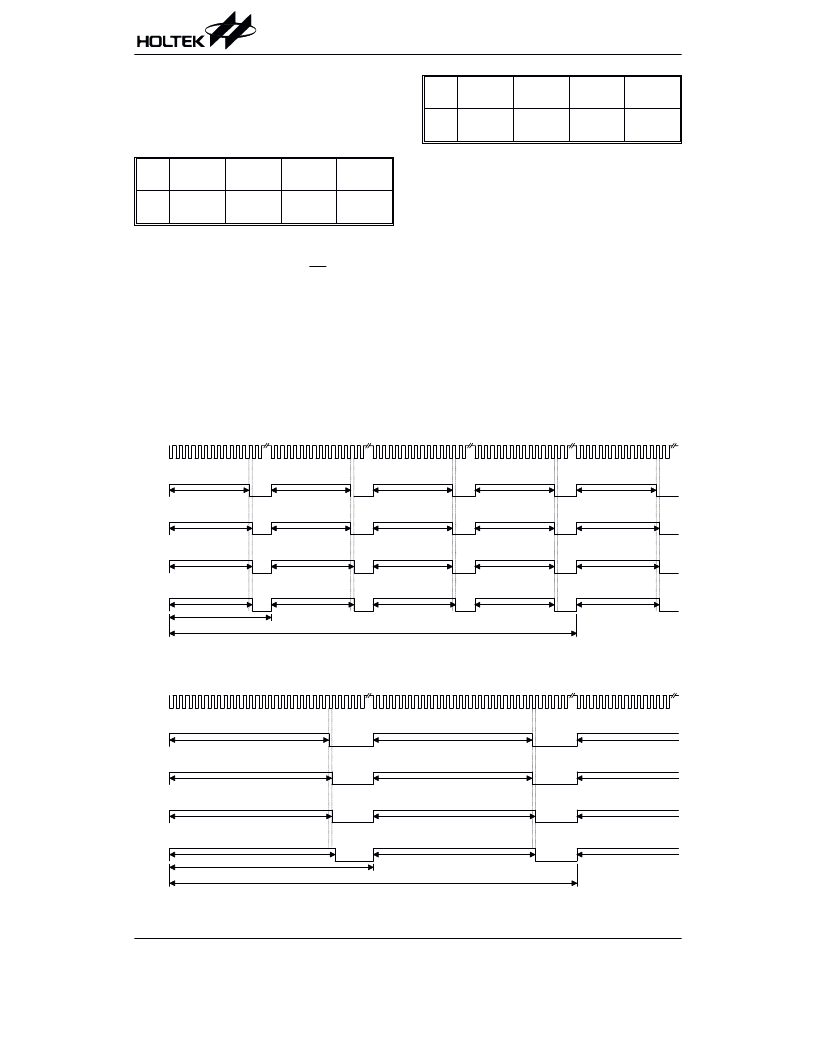- 您現(xiàn)在的位置:買賣IC網(wǎng) > PDF目錄385399 > HT46C22 (Holtek Semiconductor Inc.) 8-Bit A/D Type MCU PDF資料下載
參數(shù)資料
| 型號(hào): | HT46C22 |
| 廠商: | Holtek Semiconductor Inc. |
| 英文描述: | 8-Bit A/D Type MCU |
| 中文描述: | 8位A / D型微控制器 |
| 文件頁(yè)數(shù): | 16/46頁(yè) |
| 文件大?。?/td> | 390K |
| 代理商: | HT46C22 |
第1頁(yè)第2頁(yè)第3頁(yè)第4頁(yè)第5頁(yè)第6頁(yè)第7頁(yè)第8頁(yè)第9頁(yè)第10頁(yè)第11頁(yè)第12頁(yè)第13頁(yè)第14頁(yè)第15頁(yè)當(dāng)前第16頁(yè)第17頁(yè)第18頁(yè)第19頁(yè)第20頁(yè)第21頁(yè)第22頁(yè)第23頁(yè)第24頁(yè)第25頁(yè)第26頁(yè)第27頁(yè)第28頁(yè)第29頁(yè)第30頁(yè)第31頁(yè)第32頁(yè)第33頁(yè)第34頁(yè)第35頁(yè)第36頁(yè)第37頁(yè)第38頁(yè)第39頁(yè)第40頁(yè)第41頁(yè)第42頁(yè)第43頁(yè)第44頁(yè)第45頁(yè)第46頁(yè)

HT46R22/HT46C22
Rev. 1.10
16
October 2, 2002
lected, the PFD output signal is controlled by PA3 data
registeronly. Writing 1 toPA3dataregisterwillenable
the PFD output function and writing 0 will force the
PA3 to remain at 0 . The I/O functions of PA3 are
shown below.
I/O
Mode
I/P
(Normal)
O/P
(Normal)
I/P
(PFD)
O/P
(PFD)
PA3
Logical
Input
Logical
Output
Logical
Input
PFD
(Timer on)
Note:
The PFD frequency is the timer/event counter
overflowfrequencydividedby2.
The PA5 and PA4 are pin-shared with INT and TMR pins
respectively.
The PB can also be used as A/D converter inputs. The
A/D function will be described later. There is a PWM
function shared with PD0. If the PWM function is en-
abled, the PWM signal will appear on PD0 (if PD0 is op-
erating in output mode). Writing 1 to PD0 data register
will enable the PWM output function and writing 0 will
force the PD0 to remain at 0 . The I/O functions of PD0
is as shown.
I/O
Mode
I/P
(Normal)
O/P
(Normal)
I/P
(PWM)
O/P
(PWM)
PD0
Logical
Input
Logical
Output
Logical
Input
PWM
It is recommended that unused or not bonded out I/O
linesshouldbesetasoutputpinsbysoftwareinstruction
to avoid consuming power under input floating state.
PWM
The microcontroller provides 1 channels (6+2)/(7+1)
(dependent on options) bits PWM output shared with
PD0. The PWM channel has its data registers denoted
as PWM(1AH). The frequency source of the PWM coun-
ter comes from f
SYS
. The PWM registers is a 8-bit regis-
ter. The waveforms of PWM outputs are as shown.
Once the PD0 is selected as the PWM outputs and the
output function of PD0 is enabled (PDC.0= 0 ), writing 1
to PD0 data register will enable the PWM output func-
tion and writing 0 will force the PD0 to stay at 0 .
"
E
F G
E
F G
E
F G
E
F G
1
+
!
B
3 "
% # , & ! ( * # ' )
* # , B 3
"
3
3 3
3 3
3 3
3
3
3
3
3
3
3
3 3
3 3
3
3
3 3
3
3 3
3 3
3 3
(6+2) PWM mode
"
E
F G
E
F G
E
F G
E
F G
1
+
!
B
3 "
% # , & ! ( * # ' )
* # , B
4 "
4
4
4
4
4
4
4
4
4
4
4
4
(7+1) PWM mode
相關(guān)PDF資料 |
PDF描述 |
|---|---|
| HT46R22 | 8-Bit A/D Type MCU |
| HT46R221 | 8-Bit A/D Type MCU |
| HT46C23 | A/D Type 8-Bit MCU |
| HT46C24 | A/D Type 8-Bit MCU |
| HT46R24 | A/D Type 8-Bit MCU |
相關(guān)代理商/技術(shù)參數(shù) |
參數(shù)描述 |
|---|---|
| HT46C23 | 制造商:HOLTEK 制造商全稱:Holtek Semiconductor Inc 功能描述:A/D Type 8-Bit MCU |
| HT46C232 | 制造商:HOLTEK 制造商全稱:Holtek Semiconductor Inc 功能描述:A/D Type 8-Bit MCU |
| HT46C24 | 制造商:HOLTEK 制造商全稱:Holtek Semiconductor Inc 功能描述:A/D Type 8-Bit MCU |
| HT46C46 | 制造商:HOLTEK 制造商全稱:Holtek Semiconductor Inc 功能描述:Cost-Effective A/D Type 8-Bit MCU |
| HT46C46E | 制造商:HOLTEK 制造商全稱:Holtek Semiconductor Inc 功能描述:Cost-Effective A/D Type 8-Bit MCU |
發(fā)布緊急采購(gòu),3分鐘左右您將得到回復(fù)。